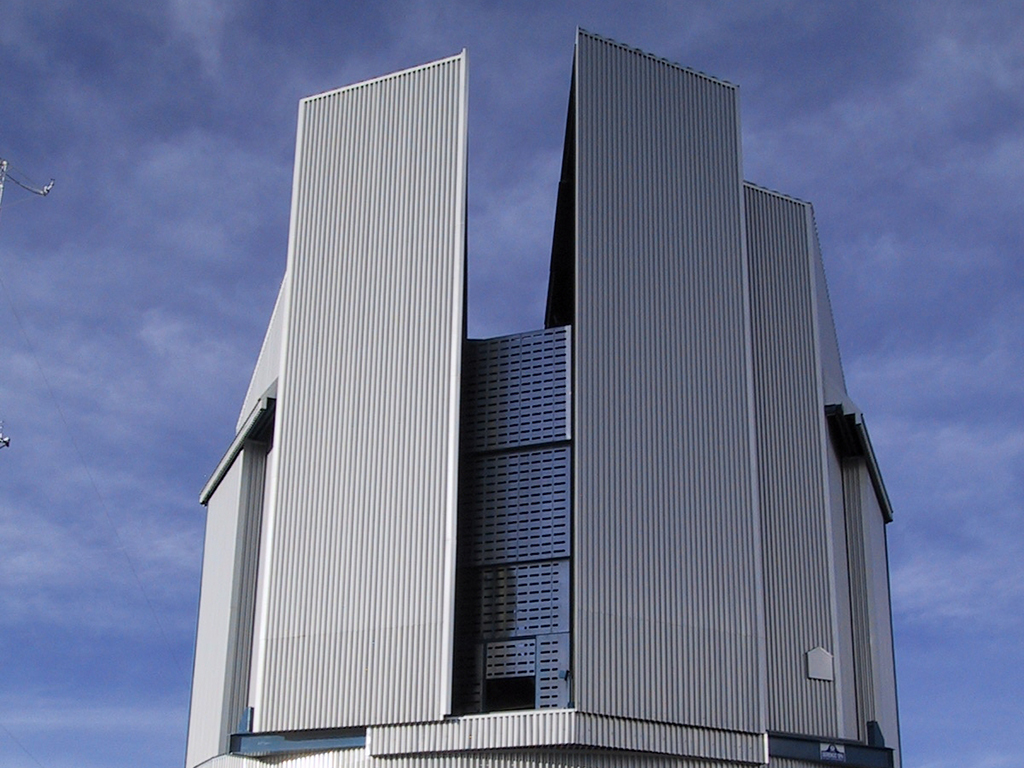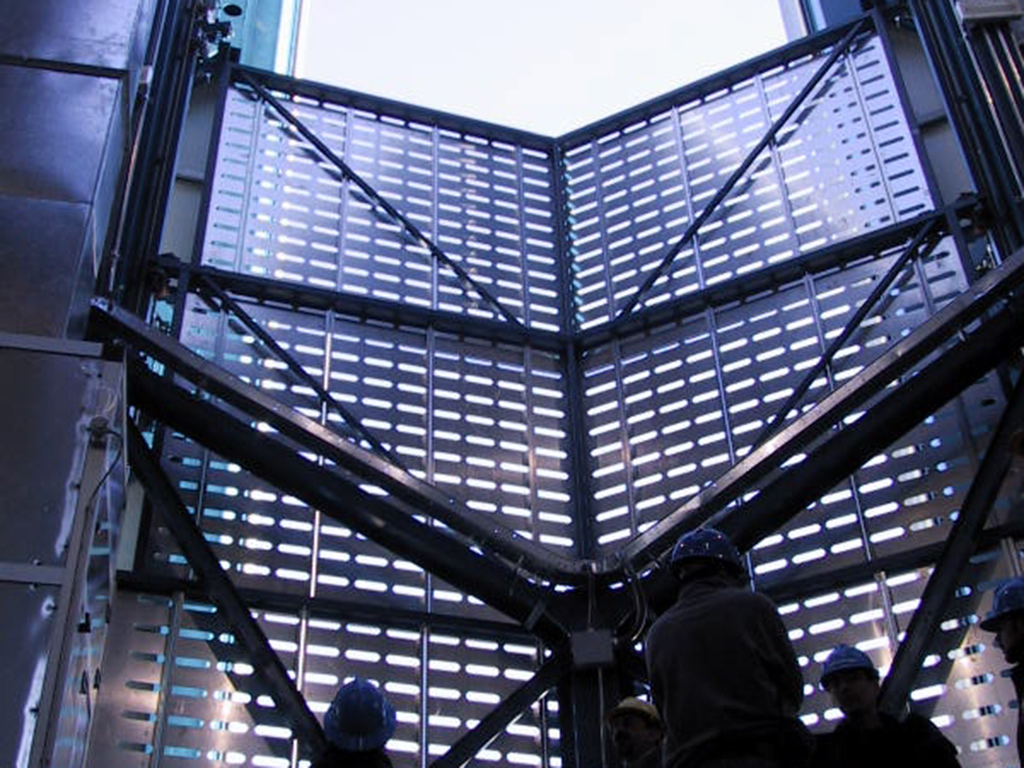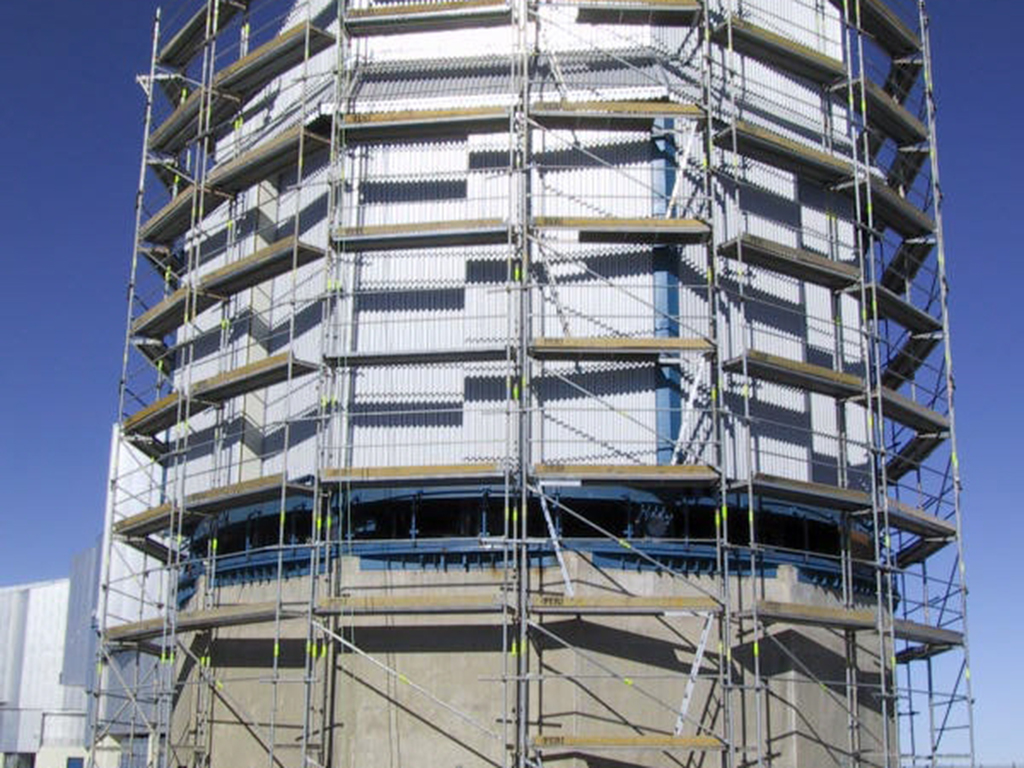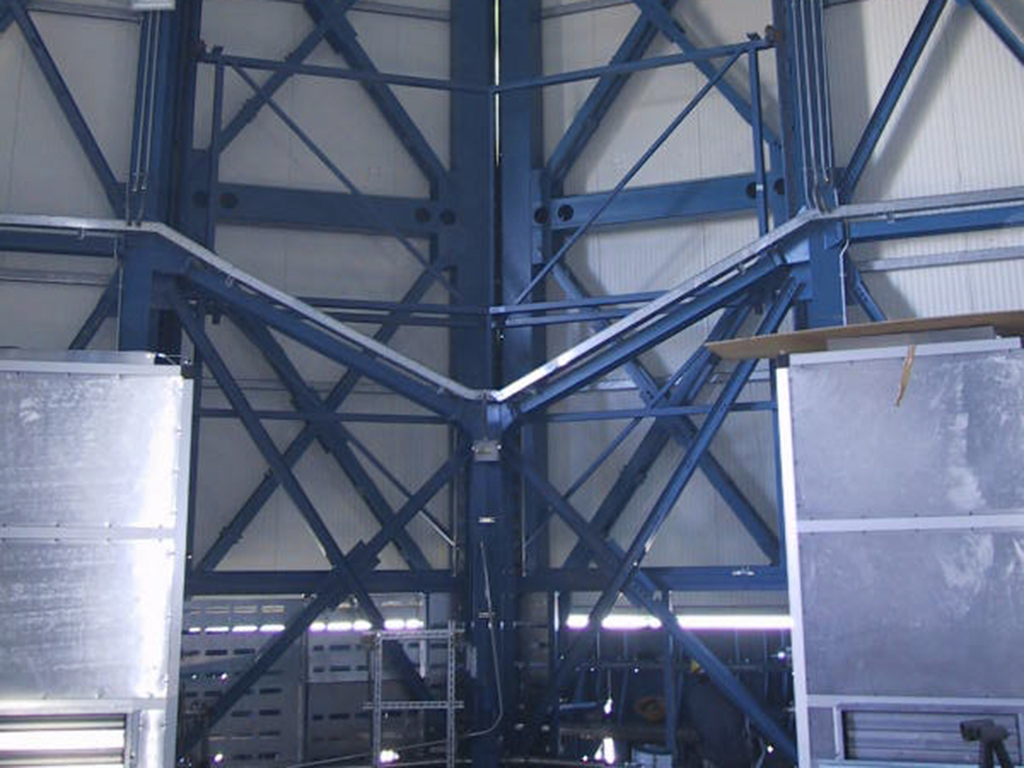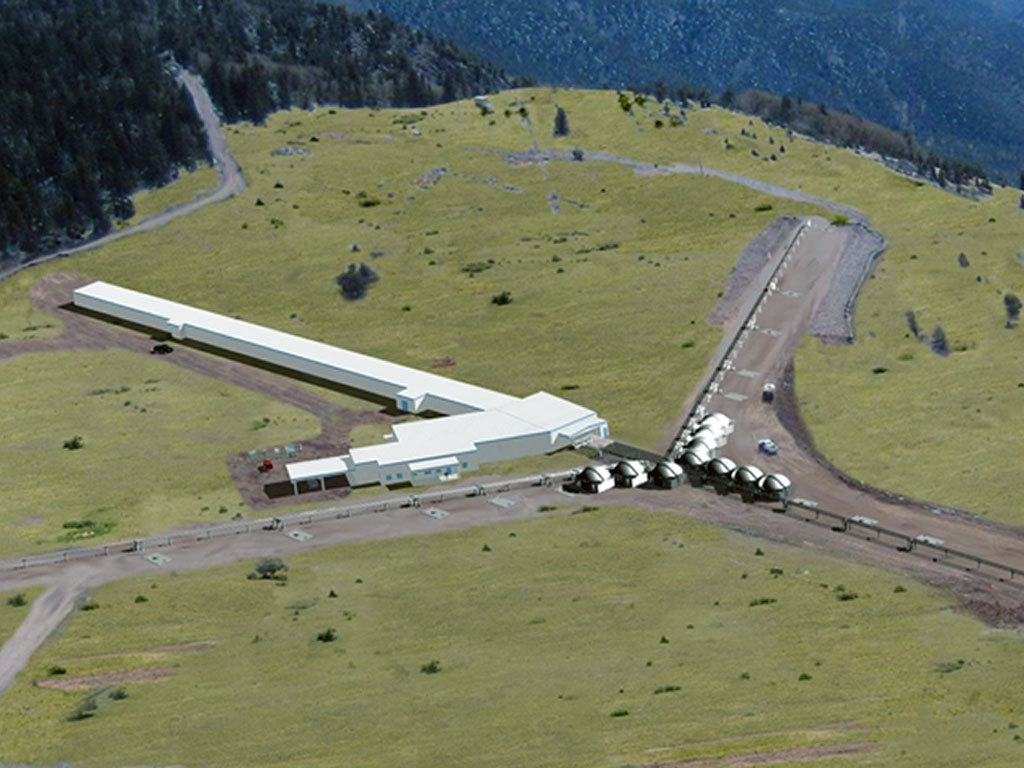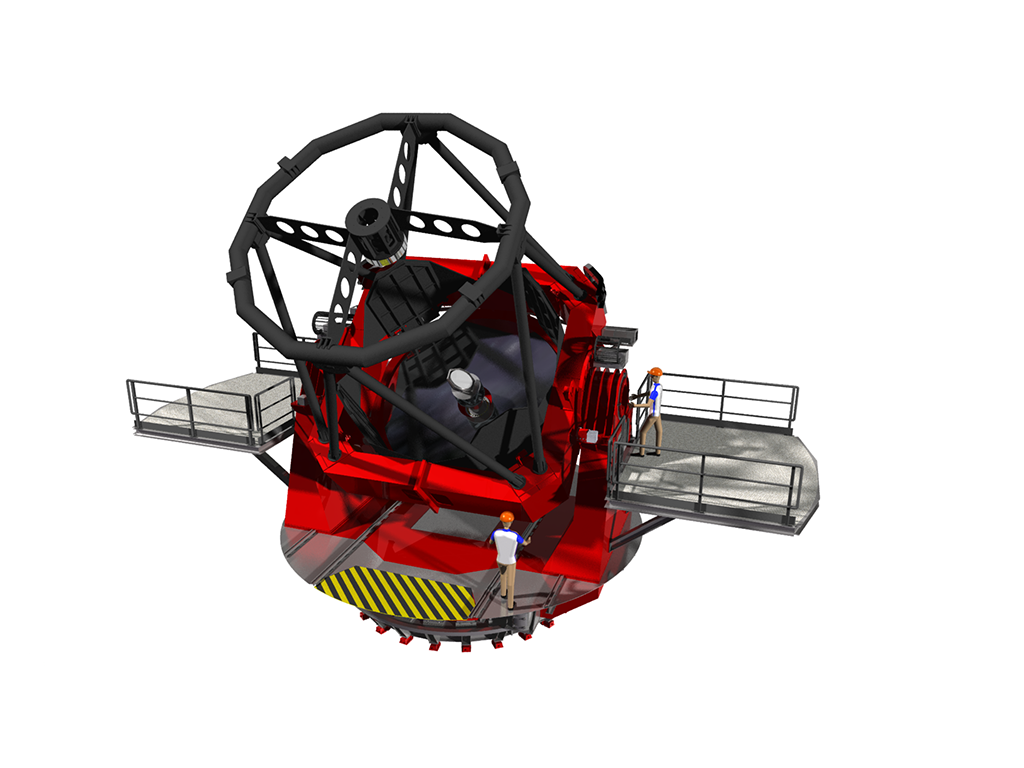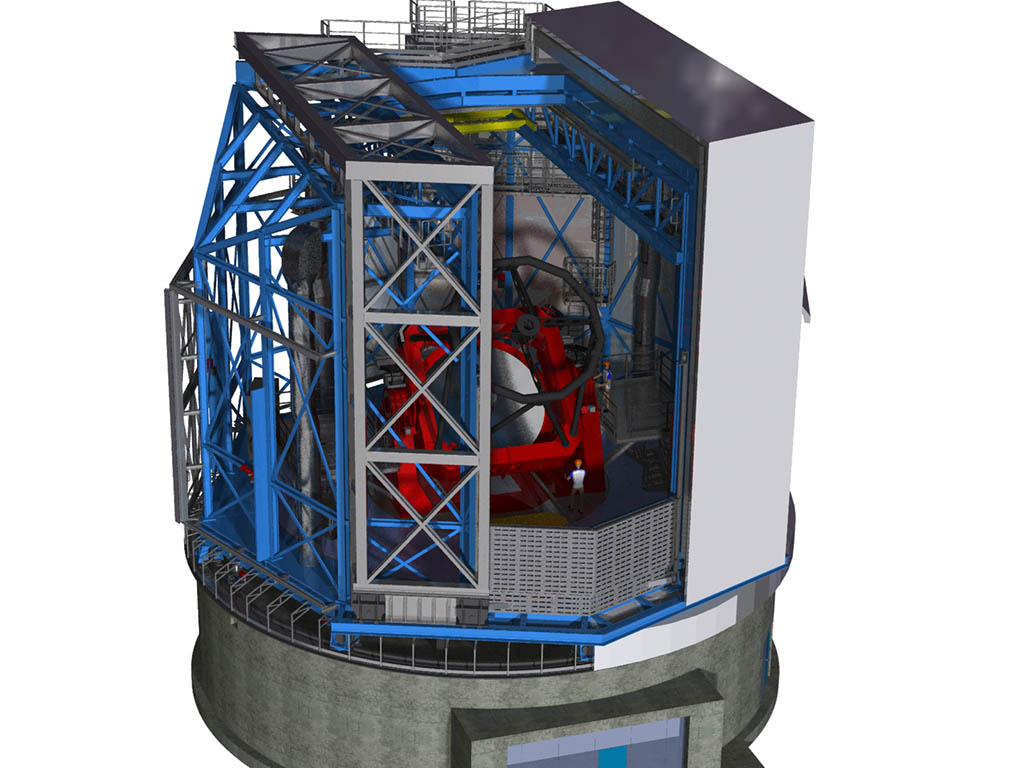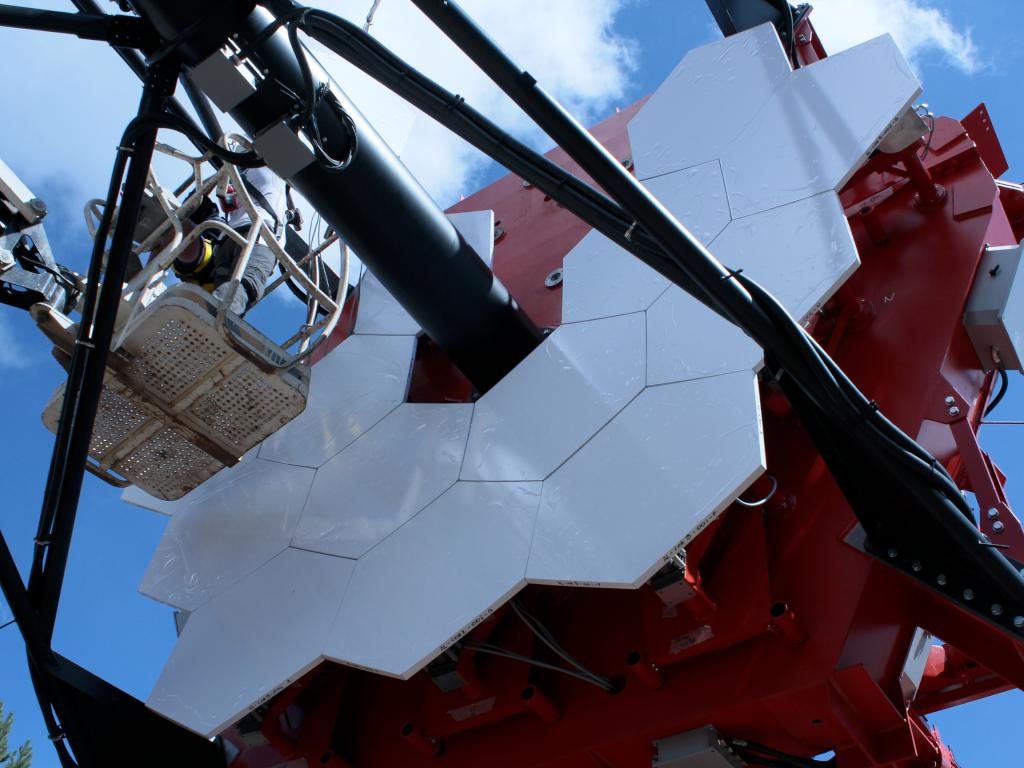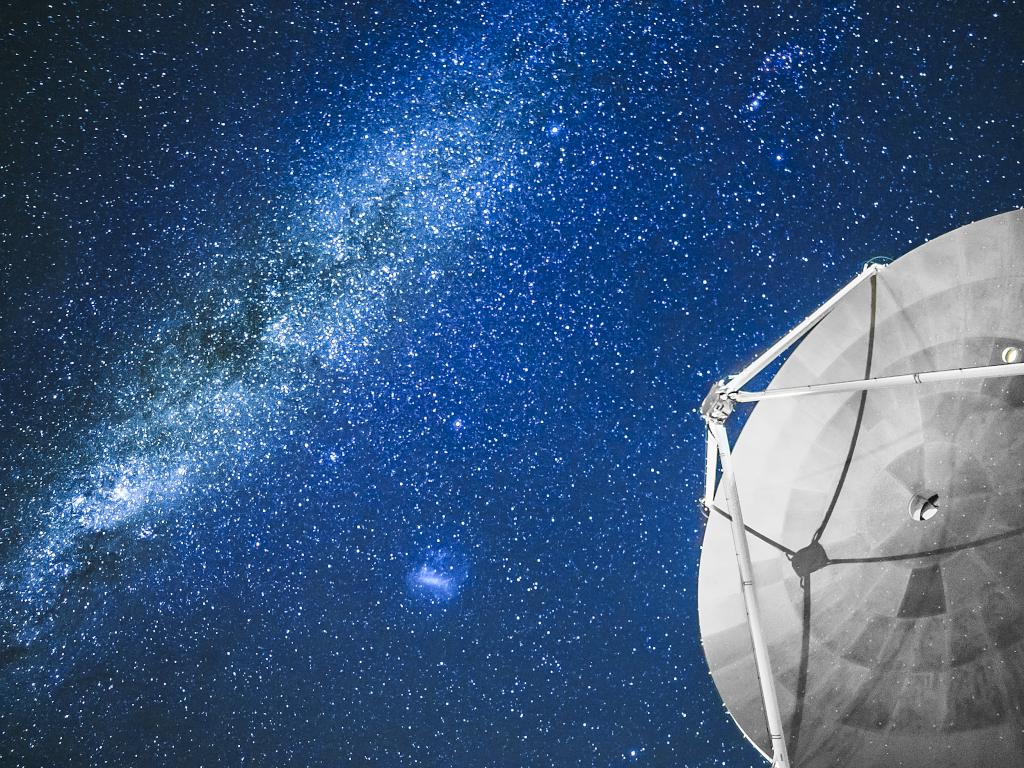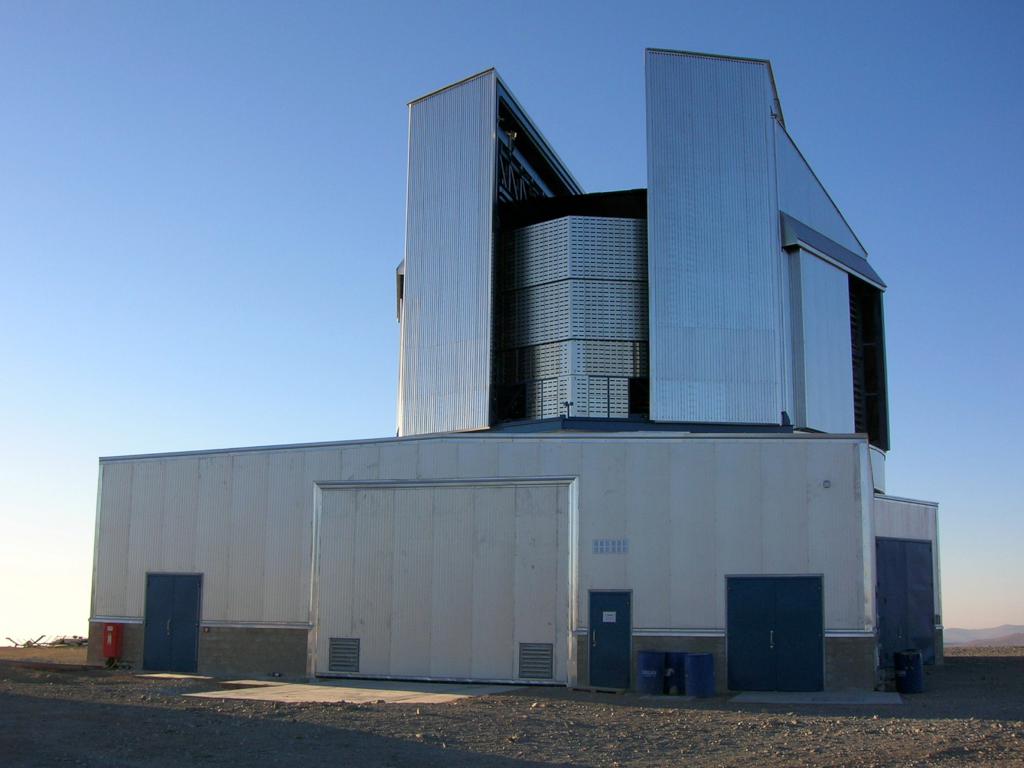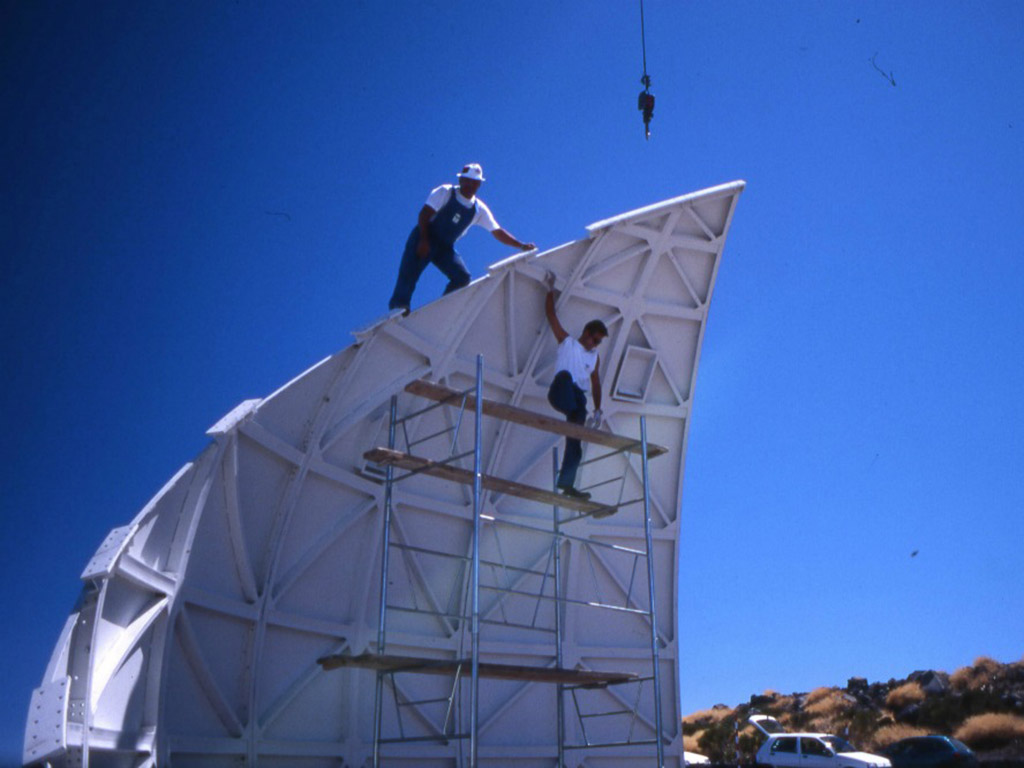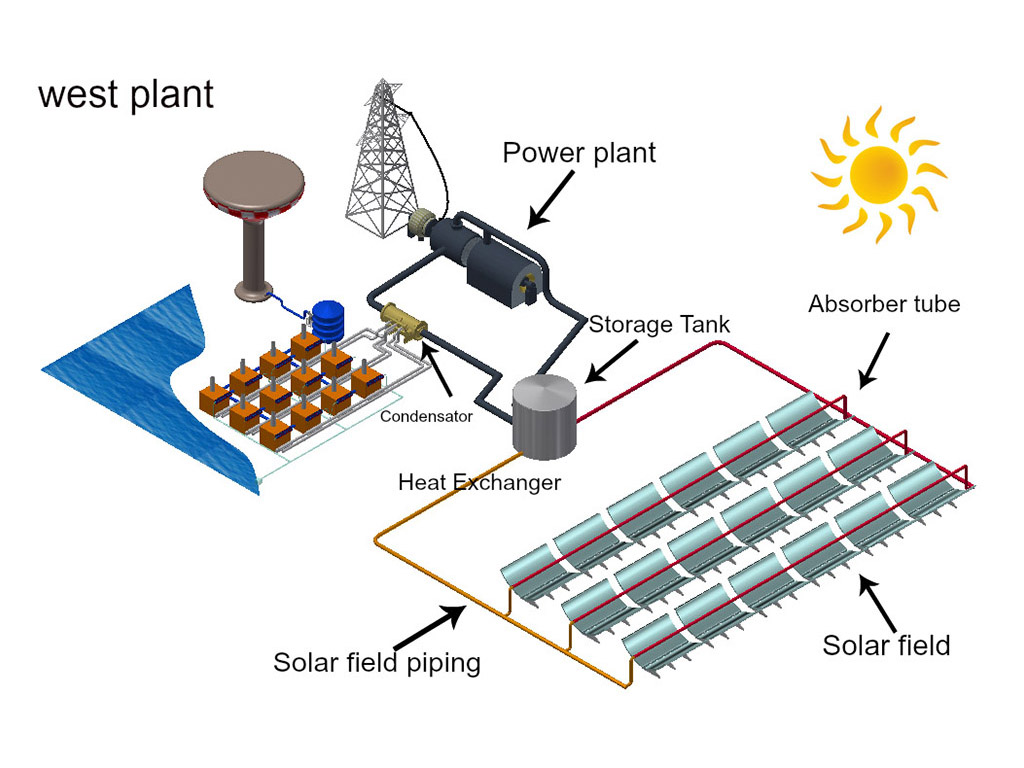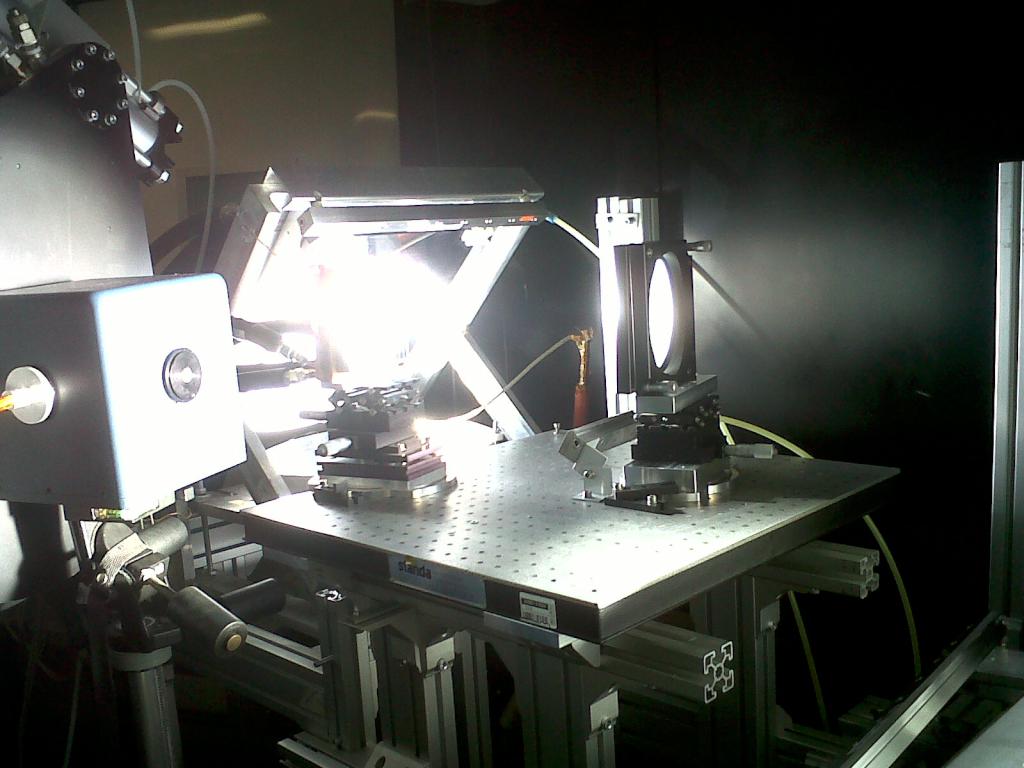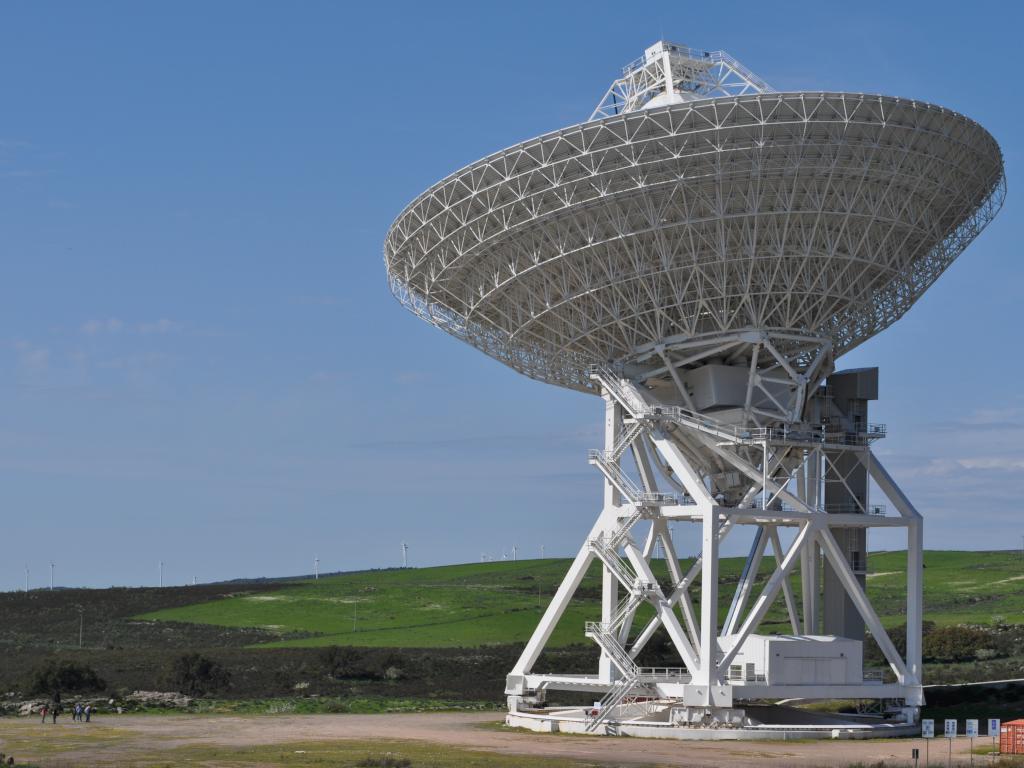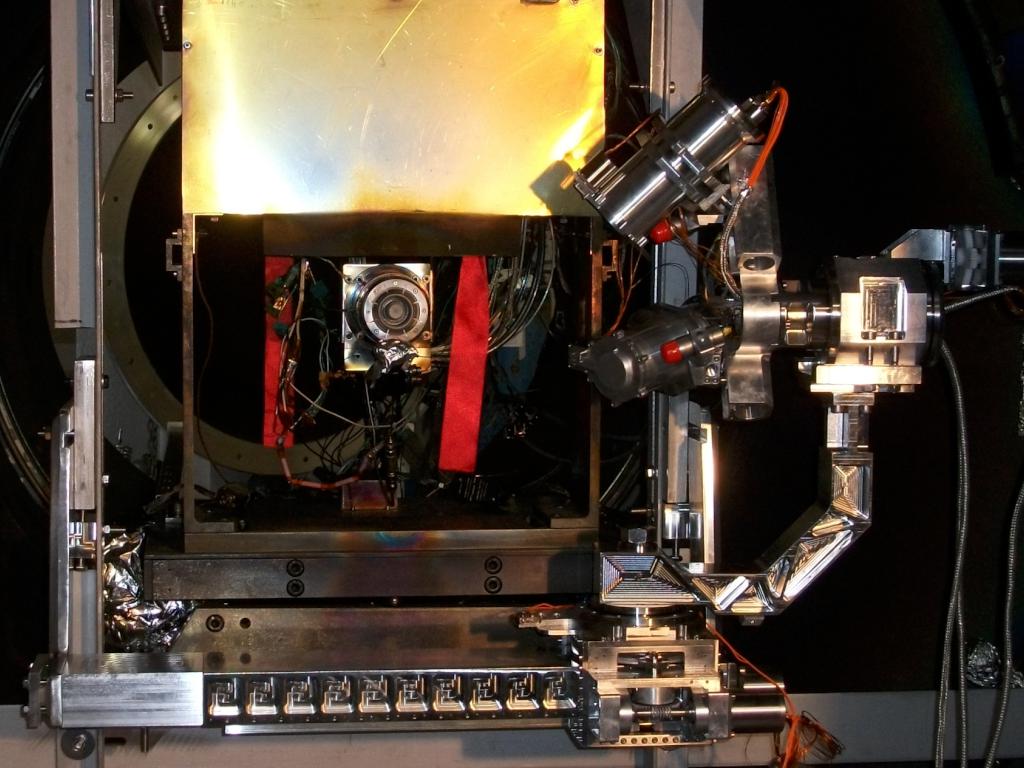Very Large Survey Telescope - The Enclosure
Site: Cerro Paranal – Atacama Desert - Chile
State: completed
Activities:
Detail Design, Manufacturing, Pre-Assembly in Italy, Packing &Transport, Erection on Site, Commissioning and Testing of Rotating Building
Date: 1997-2011
Client: ESO - European Southern Observatory
Category: astronomy
Credits: ESO Courtesy, Prof. capaccioli, EIE GROUP
The VST Enclosure
Overview:
The Very Large Survey Telescope (VST), is an alt-azimuthal wide-field optical instrument. It is the result of a joint cooperation between ESO (European astronomical Observatory), that was responsible for the civil engineering works, and the OAC (Osservatorio Astronomico di Capodimonte) of Naples, institute member of the INAF- National Institute for Astrophysics, that was in charge of the coordination of the telescope technological and scientific aspects.
The VST, which is installed at La Silla, at ESO’s Paranal Observatory (2635m asl), was inaugurated in October 2011 and its primary function is supporting the four VLT unit telescopes with wide-field imaging surveys and to explore the large-scale structure of the visible Universe.
The VST, is provided with a 2.65m diameter primary mirror, a 0.94m secondary mirror and a powerful OmegaCAM wide-field camera which is positioned at the heart of the VST, capable of performing large-scale imaging to detect rare astronomical objects, which will be investigated with the VLTs. A computer-controlled active optics system controls the shape of the M1 and the position of the M2 keeping them in perfect position all the time.
Characteristics of the VST Enclosure:
In 1997, EIE, thanks to the experience gained in the design and fabrication of large structures for astronomical use, was awarded the tender by ESO for the construction of the civil engineering works of the VST.
The Rotating Building housing the VST Telescope has an octagonal shape and it has been designed to protect the telescope against adverse weather conditions, dust, lightnings and to preserve its thermal environment, when in closed configuration. For this reason both roof and facades have been covered with thermal insulating panels and external aluminum sheets.
Furthermore, its open configuration allows the telescope a free field of view by means of two slit doors. At the same time the enclosure provides wind protection and the right amount of ventilation and air circulation in the enclosure.
Furthermore, a particular windscreen has been designed to optimize the air flow inside the telescope, thus minimizing the seeing errors and allowing excellent imaging activities.
The enclosure in which the VST lies is also provided with:
• Locking Pins;
• HVAC System;
• Lighting system;
• Pneumatic system for the AZ inflatable seal;
• Smoke detection and fire alarm systems;
• Stairs, ladders and walkways to access the enclosure levels;
• Control system and electrical installations.
Science with VST:
The primary role of the VST telescope is to support the four Very Large Telescope (VLT) in the Survey programs: The OMEGAcam camera with a field of view of one square degree (almost two full moons) is a wide-field imaging instrument for exploring rare objects in the visible Universe and can identify the most suitable candidates for detailed examination with the VLTs.
The VST studies remote bodies in the Solar System, like trans-Neptunian objects and searches extra-solar planet transits.
VST will make possible extensive studies on the Milky Way, as well as surveys on nearby galaxies, intra-cluster planetary nebulae and faint objects.
In the cosmology field the VST will observe medium-redshift supernovae to fix the cosmic distance scale and will help astronomers to investigate the expansion of the Universe.
Read Prof. Massimo Capaccioli – Director of the Capodimonte Observatory – Neaples, at the time of the VST project.
prof.capaccioli
Link to the official page of ESO VST Telescope
https://www.eso.org/public/italy/teles-instr/surveytelescopes/vst/
